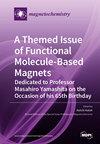电极法向磁场对氢气泡运动的影响
IF 2.5
4区 化学
Q2 CHEMISTRY, INORGANIC & NUCLEAR
引用次数: 0
摘要
与其他制氢方法相比,水电解法是获得超纯氢的最佳方法。然而,由于能效较低,这种方法的广泛应用受到严重阻碍。已经证实,引入外部磁场可以降低能耗,从而提高电解效率。虽然许多研究表明,电极平行磁场在增强气泡分离过程中起着至关重要的作用,但对电极法向磁场效果的探索还很有限。在这项研究中,我们通过改变磁铁和电极的尺寸,比较了圆形电极在电极法向磁场作用下产生的磁铁边缘效应和电极边缘效应的水电解效率。研究结果表明,洛伦兹力引起的旋转流有利于氢气从电极表面脱离。然而,磁铁边缘效应产生的氢气气泡的旋转方向与电极边缘效应相反。此外,磁铁边缘效应对氢气泡运动的影响比电极边缘效应更大。电极间隙为 30 毫米时,使用单块磁铁产生的磁铁边缘效应可使电流密度平均增加 4.9%。另一方面,由电极下的多个小磁铁产生的多磁铁效应可进一步使电流密度平均增加 6.6%。然而,在电极间距为 50 毫米时,磁铁边缘效应和电极边缘效应都没有显著增强导电性。实际上,电极边缘效应甚至会导致导电率下降。本文章由计算机程序翻译,如有差异,请以英文原文为准。
Effect of Electrode–Normal Magnetic Field on the Motion of Hydrogen Bubbles
In comparison to alternative methods for hydrogen production, water electrolysis stands out as the optimal means for obtaining ultra-pure hydrogen. However, its widespread adoption is significantly hampered by its low energy efficiency. It has been established that the introduction of an external magnetic field can mitigate energy consumption, consequently enhancing electrolysis efficiency. While much of the research has revealed that an electrode–parallel magnetic field plays a crucial role in enhancing the bubble detachment process, there has been limited exploration of the effect of electrode–normal magnetic fields. In this work, we compare the water electrolysis efficiency of a circular electrode subjected to electrode–normal magnetic field resulting in a magnet edge effect and electrode edge effect by varying the sizes of the magnet and electrode. The findings indicate that a rotational flow caused by the Lorentz force facilitates the detachment of the hydrogen from the electrode surface. However, the rotation direction of hydrogen gas bubbles generated by the magnet edge effect is opposite to that of electrode edge effect. Furthermore, the magnet edge effect has more significant influence on the hydrogen bubbles’ locomotion than the electrode edge effect. With an electrode gap of 30 mm, employing the magnet edge effect generated by a single magnet leads to an average of 4.9% increase in current density. On the other hand, the multiple magnet effects created by multiple small magnets under the electrode can further result in an average 6.6% increase in current density. Nevertheless, at an electrode spacing of 50 mm, neither the magnet edge effect nor the electrode edge effect demonstrates a notable enhancement in conductivity. In reality, the electrode edge effect even leads to a reduction in conductivity.
求助全文
通过发布文献求助,成功后即可免费获取论文全文。
去求助
来源期刊

Magnetochemistry
Chemistry-Chemistry (miscellaneous)
CiteScore
3.90
自引率
11.10%
发文量
145
审稿时长
11 weeks
期刊介绍:
Magnetochemistry (ISSN 2312-7481) is a unique international, scientific open access journal on molecular magnetism, the relationship between chemical structure and magnetism and magnetic materials. Magnetochemistry publishes research articles, short communications and reviews. Our aim is to encourage scientists to publish their experimental and theoretical results in as much detail as possible. Therefore, there is no restriction on the length of the papers. The full experimental details must be provided so that the results can be reproduced.
 求助内容:
求助内容: 应助结果提醒方式:
应助结果提醒方式:


